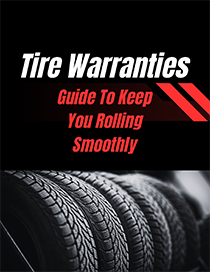How to Choose the Right Tires for Your Vehicle
When it comes to maintaining your vehicle, one of the most important aspects that often gets overlooked is choosing the right tires. Tires are the only contact your vehicle has with the road, so having the right ones is crucial for safety, performance, and efficiency. But with so many options available, how do you choose the best tires for your needs? In this blog, we’ll guide you through the process.
1. Understand Your Driving Conditions
The first step in choosing the right tire is evaluating the typical driving conditions you face. Do you drive mostly in dry, warm conditions, or are you frequently navigating through snow, rain, or mud? Understanding your driving environment helps you decide on the appropriate tire type.
- All-Season Tires: Perfect for moderate weather, providing a balance of performance in both dry and wet conditions.
- Winter Tires: Designed specifically for cold temperatures and snowy conditions, winter tires provide superior grip on icy or slippery roads.
- Off-Road Tires: If you venture off the beaten path, off-road tires are ideal for rugged terrain, offering enhanced traction and durability.
2. Consider the Size and Specifications
Each vehicle comes with a recommended tire size, which you can find in your owner’s manual or on the sidewall of your current tires. The size is critical because it affects the vehicle’s handling, fuel efficiency, and safety. Common specifications include the tire width, aspect ratio, and diameter.
- Tire Width: This is the measurement of the tire’s width from sidewall to sidewall.
- Aspect Ratio: This ratio represents the height of the tire’s sidewall as a percentage of the tire’s width.
- Diameter: This refers to the size of the wheel the tire fits, typically measured in inches.
Consulting a tire professional ensures you’re getting the best size for your vehicle and driving habits.
3. Decide on Your Budget
Tires come in a wide range of prices, and while it may be tempting to go for the cheapest option, it’s important to consider the long-term value. A higher-quality tire can provide better durability, performance, and even improve fuel efficiency.
4. Think About Fuel Efficiency and Performance
Modern tires are designed to balance fuel economy and performance. Some tires are optimized for lower rolling resistance, which can help improve gas mileage. If you’re looking for better performance, high-performance tires offer superior handling and cornering, especially for sports cars or more aggressive driving.
5. Consult a Tire Professional
Choosing the right tire for your vehicle might feel overwhelming, but don’t worry! Your local tire dealer can guide you through the selection process, ensuring that you get the best tires suited to your needs and budget.







